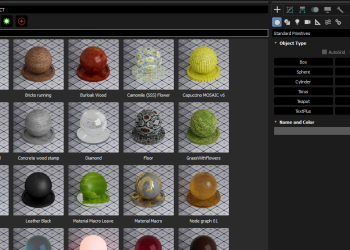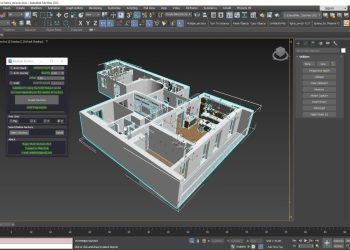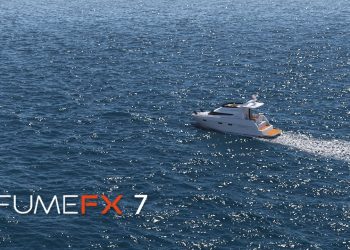(Updated) A new video is up showing meshing of fluids from multiple particle sources and bending of metals.
(Updated) A new video is up showing simulation of non-liquid masses like sand and grains, as well as how to use buoyancy and dampening parameters to get basic gas effects for simulating things like clouds.
(Updated) A new video is up showing multiple Particle Flow emitters, more cloth tearing effects and new segmentation options when using convex meshes for static and animated collisions.
(Updated) A new video is up showing cloth tearing features and the Particle Flow display operator.
(Updated) A new video is up showing a Particle Flow operator that can simulate particle geometry as Lucid objects.
(Updated) A new video is up showing external file caches, .prt export and leaving dents on simulated rigid body geometry.
(Updated) A new video is up showing the ability to animate the type of the object being simulated: rigids can become fluids, which can become cloth and so on. Also shown are improvements to curve physics to make it easier to use and more powerful.
(Updated) A new video is up showing Lucid’s new ability to preserve initial states of simulated objects, as well as providing tips on improving simulation of soft body objects.
(Updated) A new video is up showing the latest updates: Object Attachments (a way to attach simulated objects together), Live and Locked Simulation Modes.
(Updated) A new video is up showing the latest updates, including the ability to mesh Particle Flow fluids with new fluid meshing controls including anisotropic fluids, and stats display, among other improvements.
(Updated) A new video is up showing a foam feature for liquids and rope simulation.
Ephere has made available a new video with an update on the development of their plugin for Max that provides an implementation of NVidia Flex physics technology. The video shows new functionality added to the plugin including: ability to animate where and when cloth gets fixed and deformed by you, new parameters to control soft bodies, and fluids adopting their volume’s UV coordinates and then passing them back during meshing. Lucid Physics is currently available for beta testing. Watch the video on Vimeo and find out more on Ephere’s website.













http://ephere.com/plugins/autodesk/max/lucid/request_2724.html
limitations are bad things!
Marsel seems a very responsive partner on “beta compiling” what beta testers want…I hope he solves the solvable.
Any idea of when its releasing and what the cost will be?
Nothing is set in terms of date or price yet. If I had to guess though, beginning of next year for a couple hundred dollars.
Wow.
Hi,
I am very excited about this plugin, as development seems very quick and active. One thing I am concerned about is the complexity it can handle. So far I’ve only seen very low resolution coarse simulations. I am very interested if Lucid could handle some production-detailed fluid simulations… Could we get an example of that?
Thanks 🙂
Thats the main drawback of lucid is that cant really handle large particle counts my gtx 980 can only simulate a little over a million. lucid is good for small quick fast simulations.
My personal opinion is that you’re not going to use Lucid liquids in many cases. What we’d need for that is a GPU/CPU hybrid but Flex, the libraries it uses, is built for games. However, for soft/hard body physics I think it will be useful in many scenarios as it can handle more than enough for most scenarios. In conjunction with PFlow and glue (not sure if the Pflow integration can handle that yet), we could do some fairly extensive destructive physics at a great speed. I also think cloth (except perhaps for characters) will be very useable and speedy compared to Max’s built-in cloth.
So I wouldn’t count on Lucid for large scale liquid simulations, but for other physics related simulations, it should be great! Combine this with StokeMX Spacewarp and you could do some really interesting things.
No matter what people developed there will those complainers. Use it or not.
cannot wait for this to become available.